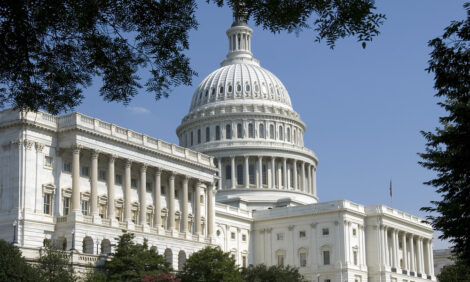



Are You 60 Per Cent Calving in the First 21 Days?
US - Farmers are being urged to put pen to paper and calculate the number of cows calving in the first 21 days of the calving season.This is a very important number to record and think about as one develops management plans and reviews those plans, says Kris Ringwall, Beef Specialist a North Dakota State University Extension specialist.
Why? The upcoming breeding season is not very far away, adds Mr Ringwall. For those who have an early calving season, the bulls already may be out with the cows.
Are you at 60 percent? As each operation reviews its herd calving history, a cow is expected to start cycling following birth and prior to the bull arriving in the pasture. Ideally, a cow should cycle within 80 days of calving and then settle with next year's calf. Therefore, the cow is expected to maintain an average calving interval of 365 days.
How many cows maintain a 365-day calving interval? Well, that particular number is not well tracked in the beef business. Instead, producers can and should calculate the percent of cows in the herd that calve within the first 21 days of the calving season and each successive 21-day period thereafter.
Many producers have been calving for the last three weeks, so stop reading this article and go pick up the calving book. Now count how many cows calved during the first 21 days of the calving season. Once you know that number, divide it by the number of cows that are expected to calve. The answer is the point of this discussion. What did you get?
Let me say it again: Go get your calving book, count the number of cows that calved during the first three weeks of the calving season, and divide it by the number of cows expected to calve.
Typically, that number should be more than 60 percent. This does not mean a particular cow has a 365-day calving interval, but it is a good indicator that the cows are getting bred on time.
A producer should be questioning why all the cows don't calve during the first 21 days of the calving season. About 40 percent of the herd calves during the second 21 days or later. Why? Once a cow misses an opportunity to breed, the chances of getting back into the first 21 days are low.
Those cows would need to be cycling 60 days post-calving or sooner following calving to move up into the first 21 days. That does not happen routinely because cows seem to need 60 to 80 days post-calving to rebreed.
In fact, if the percentage of cows calving the first 21 days of the calving season is less than 60 percent and the percentage of cows calving the second 21 days of the calving season is greater than 25 percent, a serious re-evaluation of the herd needs to occur. It means that more cows are slipping back and not rebreeding on time. In other words, the cows are not maintaining a 365-day calving interval.
These numbers come from the cows enrolled in the North Dakota State University Extension Service's CHAPS program maintained by the North Dakota Beef Cattle Improvement Association.
Currently, just less than 63 percent (CHAPS five-year rolling average) of the cows exposed to bulls settle with a calf during the first cycle. A little more than 25 percent of the cows exposed to bulls settle with a calf during the second cycle, and the remaining cows (12 percent) are getting bred during the third or later cycles.
I realize that these numbers can be confusing. However, producers need to write these numbers in the book following the calving season to evaluate the program and think about modifications that may need to be made in the long term.
As a producer, one should ask why all the cows don't conceive during the first 21 days of the breeding season. Is it the bull or is it the cows at fault? Well, both could be at fault. However, once a cow calves, her annual calving date is very hard to change. If she starts her productive life conceiving during the first 21 days of the breeding season, with no calving difficulty and proper nutrition, she should continue to maintain a 365-day calving interval (give or take a couple of days) if there is a fertile bull available.
Again, looking at the CHAPS rolling five-year average for heifers that start their productive life calving before or during the first 21 days of the calving season based on mature cows, approximately 72 percent meet the criteria. Another 14 percent calf during the second 21 days of the calving season, essentially making it very difficult, even with exposure to very fertile bulls, to ever calve in the first 21 days of the calving season.
The point today is for you to calculate the percentage of cows calving during the first 21 days of the calving season and then challenge your management plan.
TheCattleSite News Desk

